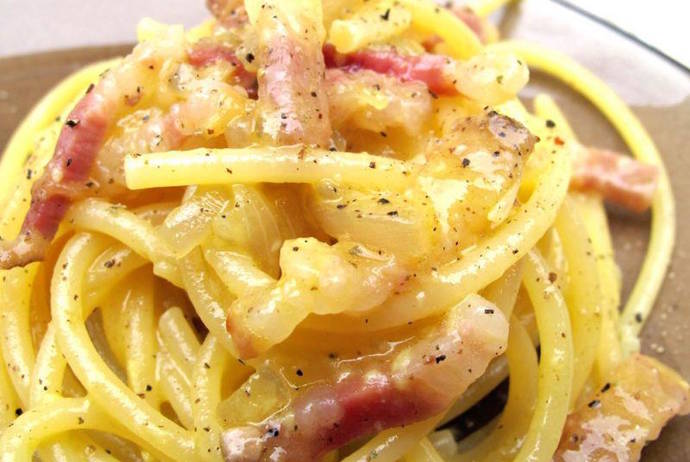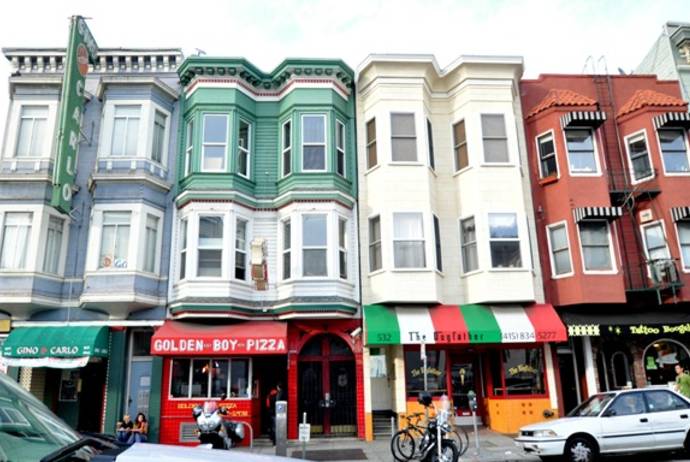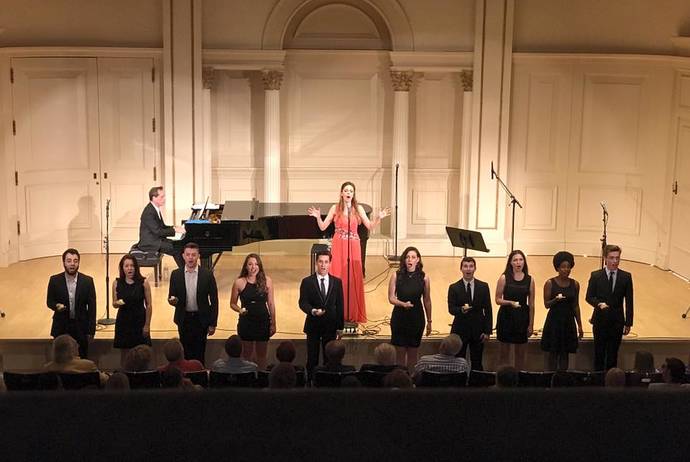Sometimes a dish is more than just a dish: it’s a cultural passport, a concentration of a country’s specific flavors and aromas in a single plate. Savoring it causes you to travel with your senses without ever getting up from your chair. Though it’s well-known that Italy’s national dishes are pizza and pasta, it’s also true that Italy’s regional culinary traditions are so vast that as you travel through the Boot, you feel like you are dining in a different “country” all the time. Have you ever tried tagliatelle with ragù from Emilia-Romagna? How about a panuozzo from Naples or polpette con caponata siciliana from Sicily?
Thankfully, some of the best Italian chefs are scattered across the five boroughs. Come discover what they have to offer this spring thanks to our unique selection of signature dishes found in various Italian restaurants across the city. And this is only the appetizers, stay tuned for more in the near future!
Our Selection for this Summer
Al Vicoletto
3560, 18th Street
(212) 620-6166
Cuisine Mediterranean
Ambience Trendy
Price $$$
A delicious restaurant that brings the charm of small Italian alleyways to an ever-chaotic New York City. You’ll notice a perfect balance between a refined atmosphere—as you would expect from an Italian vicoletto where you find your favo- rite bar or bottega—and an elegant, stylish restaurant that harmonizes with the modern era. This multifaceted spot is constantly changing; it’s no longer simply a market for extremely high quality products or a place for breakfast, lunch, and dinner. Brunch, cocktails, live music, sampling courses, catering, a brand- new chef, and a renovated menu combine to make dining at Al Vicoletto an even more diverse, fanciful, and charming experience.
Chef Alessandro Pennelli from Apulia recently renovated the restaurant menu, which now presents a sophisticated Mediterranean-based selection, such as the traditional orecchiette broccoli, cime di rape ed acciughe (orecchiette with broccoli, turnip greens, and anchovies) or purea di favetta con seppie grigliate e quinoa rosso (mashed favetta, grilled cuttlefish, and red quinoa). A truly exceptional yet simple dish is the chef beef polpette, which proves to be one of Pennelli’s trending masterpieces.
MIDTOWN WEST
Don Antonio by Starita
309 West 50th Street
(646) 719-1043
Cuisine Traditional Neapolitan
Ambience Cozy
Price $$
Pizzeria Starita, founded in Naples in 1901, represents and reflects what a true Neapolitan pizza really is. Eating this pizza is, in fact, like reading the history of pizza. Don Antonio Starita and his great-grandfather, also named Antonio, are iconic of the strong bond between the culinary tradition of pizza and the history of both Naples and Italy in general. Don Antonio knows the ancient secrets of pizza making, which is truly more of an artform than anything else. It’s a craftsmanship that you certainly can learn, but you need to embrace it like the true maestri piazzaioli do. What kind of flour to use, what portions of flour and water, how to wield a wooden pizza paddle, how to use your hands to make a perfect dough, and so on are refined techniques–similar to a painter with his colors. Don Antonio brought that tradition to New York thanks to the support of Roberto Caporuscio, a pizzaiolo with roots in America. Along with his daughter Giorgia, Caporuscio helped Don Antonio to expand his pizzeria brand in the city and to become a cornerstone in the world of Italian dining. Roberto and Giorgia opened Don Antonio by Starita in Midtown West and Kestè Pizza & Vino in the Village. A new Kestè recently opened in Williamsburg and yet another in Wall Street, where Giorgia and Roberto started a pizza school as well, to share the secrets of Neapolitan pizza making. The menu features of course a selection of works of art pizzas prepared with all freshest ingredients a in the Neapolitan tradition. The classic and most representative is of course the buffalo mozzarella, tomatoes, arugula, ham and extra virgin oil. Another best seller pizza is the gluten-free Marinara that Giorgia Caporuscio suggests, prepared with tomato sauce, oregano, fresh chop- ped garlic, basil and extra virgin oil.
East Village
Risotteria Melotti
309 East 5th Street
(646) 755-8939
Cuisine - All about rise from Verona
Ambience Cozy
Price $$
Nothing identifies the Italian culinary tradition more than pasta, the centerpiece of the Mediterranean diet. It’s more than a food; in fact, it’s almost a way of being. But there’s another important first course that is just as rooted in the Italian culture as is pasta, and that would be rice. From the Alps to the islands, rice dishes are always representative of an Italian region’s flavors, whether more earthy or seafood based. Risotteria Melotti in NYC is the place to have an authentic experience with exquisite Italian rice dishes. Originary from Verona, Veneto, the Melotti family has been producing rice since 1986, focusing specifically on Carnaroli rice and Vialone Nano rice–a medium-grain rice variety typical of the flat, rice-growing areas of the southern Bassa Veronese–Veronese lowlands. Regular rice is simple, while risotto is a full, rich dish that combines rice with different ingredients. That’s what you will find at Melotti’s. The restaurant brings a taste of Isola della Scala in Verona to the East Village, and it offers a wide selection of risotto dishes that are 100% gluten free! The most distinguished dish would defini- tely be the risotto all’Isolana–a typical Veronese dish. It borrows its name from the Isola della Scala where the rice grows. Prepared as the matron of the Melotti’s family Rosetta used to, the dish is cooked with pork loin, fresh pancetta, parmigiano cheese, rosemary and a hint of cinnamon.
LOWER MANHATTAN
Piccola Cucina Osteria Siciliana
196 Spring Street
(646) 478-7488
Cuisine ambience price
Traditional/Sicilian Friendly
Price: $$
The success story of Piccola Cucina is the story of executive chef Philip Guardione, a true Sicilian raised in the shadow of Mount Etna. As a child, Philip used to help his grandmother prepare food for the holidays. The traditional, ancient recipes of true Sicilian cooking were passed down from those experienced hands to the ones of the young and talented Philip. This doll-house sized restaurant, which recently opened in New York, has already gained press attention and has catered events for prestigious institutions like the Consulate General of Italy. The polpette della nonna con caponata siciliana (homemade grilled meatballs with Sicilian caponata) are a classic and something you will hardly find anywhere else in the city. Bread, sun dried tomatoes, anchovies, capers, Pecorino cheese from Ragusa, lemon peel, and wild fennel present a big explosion of flavors in a tiny, tasty meatball. Another signature hidden gem of Piccola Cucina’s menu is the ravioli alla Norma, which are stuffed with eggplant in tomato sauce with ricotta cheese. If you feel like having a more casual night out or a quick bite and a drink, be sure to stop by the Piccola Cucina Wine Bar located at 184 Prince Street. There, you can taste exquisite Sicilian wines and delightful tapas like the famous arancini, fried rice balls with a ragù and mozzarella center.
GREENWICH VILLAGE
Ribalta
48 East 12th Street
(212) 777-7781
Cuisine: Neapolitan & Creative
Ambience: Ambience
Price: $$
If you are looking for the best Italian restaurants in the city, and you’ve never heard of Ribalta, either you haven’t been to New York or you haven’t done your research well. Ribalta is the quintessential Italian restaurant, from the quality of the food to thesense of engagement that restaurant owner Rosario Procino, chef and co-founder Pasquale Cozzolino, and all their staff make you feel. Although New York is full of top qualities Italian restaurants, it is so hard to find a true Italian pizza—one with the right taste, the right size, and one that is made with the right dough and the freshest ingredients. Ribalta fills that void, offering you a true Neapolitan pizza and culinary experience. Rosario himself is Neapolitan, and he moved to New York 13 years ago. Before founding Ribalta, Rosario worked in the corporate world, specifically for Barilla, and then for the famous Italian restaurant Kestè in the village.
However, Ribalta is the right place to express his Neapolitan heart, not only through food but also through his loyalty to Naples’ soccer team S.S.C. Napoli. Ribalta organizes screenings of Italian soccer matches, a fun way to live an Italian folkloric experience. Rosario is convinced that real pizza is Neapolitan pizza. There’s no other place in Italy, or in the world, where you can taste the real pizza. Chef Pasquale Cozzolino, a Neapolitan who has been making pizza since he was 14 years old, shares Rosario’s vision and turned it into reality. The restaurant’s pasta is also a big hit among clients. The signature pasta dish is the genuine spaghetti al pomodoro— artizan bronze drawn spaghetti with “piennolo” cherry tomatoes, grown in volcanic soil from Mount Vesuvius. As for the pizza, the Margherita STG is the absolute best pizza in New York according to NY Magazine, and it’s the only pizza in the city made with special milk cream from Agerola—a city close to Naples.
THE BRONX
Mike’s Deli
2344 Arthur Avenue
(718) 295-5033
Cuisine Italian & Italian-American Fusion
Ambience Friendly
Price $$
If you are looking for the authentic scents and flavors of a true Italian neighborhood, you’ll want to take a quick trip up to the Bronx to go visit the Arthur Avenue Retail Market and stop by Mike’s Deli. You’ll be pervaded by the energy of a vivacious and folkloristic southern Italian street-market.
Mike and David Greco are the owners, and their history dates back to 1929, when Grandfather Gennaro, moved to New York from Naples. Their menu is a unique fusion of Italian-American taste and stellar-quality products. The deli is big on panini; however, that’s not its only delight. Chef David Greco has many signature dishes, but you definitely can’t leave Arthur Avenue without trying his specialty–the famous Neapolitan eggplant parmigiana: sliced eggplant coated in crispy breadcrumbs, covered with homemade marinara sauce and hot mozzarella. The process of breading the eggplant to the point where it’s both crispy and not too oily is a unique Calabrese twist on the recipe.
UPPER WEST SIDE PICK
Piccolo Cafe: Typical Bolognese Cuisine and a Legendary Catering Service
Piccolo Cafe
157 3rd Avenue
(212) 260-1775
Cuisine Regional/Emilian
Ambience Rustic
Price $$
More than just a coffee shop and a restaurant, Piccolo Cafe is a trend and a philosophy of dining that is simple, traditional, and delightful. You’ll find only the most healthy, fresh products as well as real Italian espresso and pastries, all in a rustic Italian ambience. But that’s not all you’ll experience at the Cafe’s four locations in the city. Typical Bolognese cuisine is the restaurant’s ace in the hole, and their catering is becoming extremely popular among prestigious New York events like the Sundance Film Festival. Chef Michele Casadei Massari prepares and describes his dishes with a cinematic, passionate verve; movies are indeed another of his passions. His quintessential dish, traditional tagliatelle with ragù, is, of course, rooted in his beloved Bologna. The ragù is cooked for 5 hours, so the meat does not fall apart, and its proteins don’t split. This ensures that the meat is very rich. It is served with a classic tagliatelle, along with parmesan or onions. This special ragù alla bolognese is the base for the ragù menu including the cotoletta, the traditional lasagna, the goccia d’oro lasagna, and of course, the tagliatelle.
You will find equally alluring the other three locations of the Piccolo Cafè at 313 Amsterdam Ave, 274 W 40th Street, and238 Madison Avenue. A hyper-energetic man, Michele actually works in all these venues at the same time. The only way to locate him is through Instagram, which he uses compulsively.
THE JOY OF MIDTOWN WEST
Exquisite Mediterranean Fusion Cuisine From the Kingdom of the Two Sicilies
Il Gattopardo
13-15 West 54th Street
212 246-0412
Not everybody knows that up until the mid 1800s, the southern regions of Italy were united under one reign called the Kingdom of the Two Sicilies. In 1860, the Kingdom of Sardinia was annexed to it to. Subsequently, the Kingdom of Sardinia combined with the northern regions of the peninsula in order to form the Kingdom of Italy. Both Giuseppe Tomasi di Lampedusa’s book The Leopard and Luchino Visconti’s eponymous film depict that crucial and transitional moment in Italy’s history. Rooted in these historic events are three exceptional restaurants that Gianfranco Sorrentino from Naples opened with his wife, Paula Bolla, and partner Executive Chef, Vito Gnazzo, from Salerno: The Leopard des Artistes, Mozzarella & Vino, and Il Gattopardo. Like the other two, Il Gattopardo offers the splendor of the Kingdom of the Two Sicilies and exquisite Mediterranean fusion cuisine inspired by culinary traditions from Campania, Basilicata, Calabria, Apulia, Sardinia, and of course, Sicily. Pasta, vegetables, and cheeses are combined with the freshest seafood. Sorrentino raves, “Vito is like the great Italian wines; he is absolutely becoming better and better with age.” Chef Gnazzo’s signature dish is the famous spaghetti with grey mullet bottarga, garlic, parsley, extra virgin olive oil, and a hint of crushed Calabrian red pepper.
UPPER EAST SIDE PICK
San Matteo
1559 2nd Avenue
(212) 861-2434
cuisine Typical/Southern
Ambience Rustic
Price $$
Where the Star is the Panuozzo, a Cross Between a Pizza and a Panino Brothers Fabio and Ciro Casella are a cornerstone in the world of New York’s Italian dining scene. San Matteo, their historical restaurant, which brought the best and most enduring traditions of Salerno’s cuisine to the city, is a bona fide little Italy extravaganza. It’s hard to find a more rustic Italian place in the city that serves stellar products and provides hip service. Ciro’s energy and commitment to his job and clients is infectious.
Incredible Neapolitan pizza pies are a trademark of the restaurant, and they’re baked in an amazing wood-fired oven. However, the undeniable star of the menu is the famous panuozzo from Salerno. Panuzzo is a cross between a pizza and a panino. It starts out similar to a pizza, with the same dough cooked in the oven in a sandwich-form. The bread, with its tantalizing honeycomb- like crumbs, is then opened and filled with cold ingredients. It is sometimes placed back in the oven to heat up the ingredients inside. The most classic panuozzo is the Al Crudo–Parma ham, buffalo mozzarella, baby arugula, and cherry tomatoes.
Though panuozzo is San Matteo’s trademark, you don’t want to miss the chance to taste the best parmesan in the city at their more casual location Il Salumaio at 1731 2nd Avenue, where you can savor the parmesan in a hot panino. Also on 2nd Avenue you’ll find San Matteo Pizzeria, a Pizza Espresso Bar that combines the pizza from San Matteo and the products of Il Salumaio in a trendy spot where you can also have a bite to eat or a drink of some typical Neapolitan espresso to start your morning with an energy boost.







































